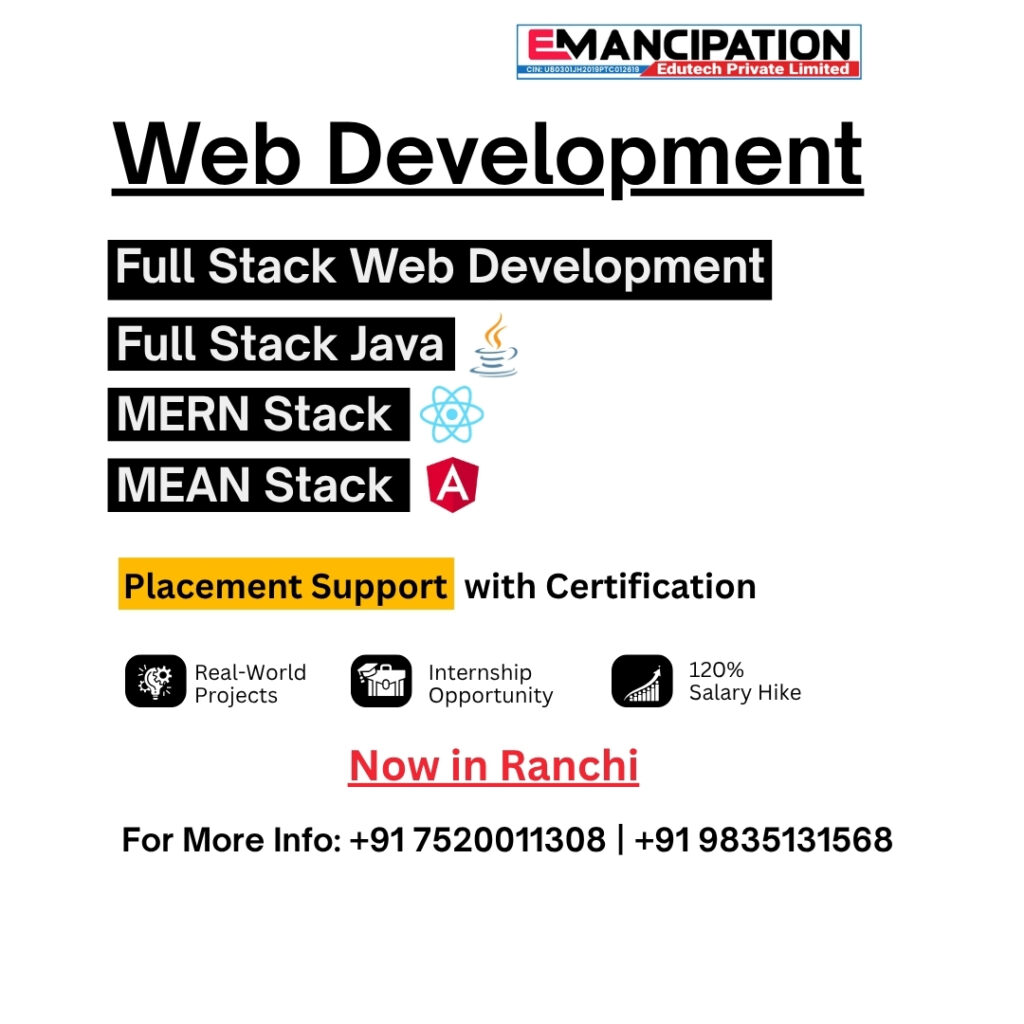Top IT Skills for 2025: Why Students Must Upgrade Now to Stay Job-Ready
In today’s rapidly evolving digital world, the demand for tech-savvy professionals is higher than ever. Companies are no longer looking only for degrees—they want candidates who can solve real problems, build scalable systems, use modern tools, and keep up with the latest innovations. This is exactly why understanding the Top IT Skills for 2025 is crucial for every student, fresher, and working professional who wants a future-proof career. Whether you’re preparing for placements, switching careers, or starting your IT journey, having the Top IT Skills for 2025 will set you apart from thousands of other applicants. At Emancipation Edutech, we train students with industry-ready skills so they are well-prepared for internships and full-time job opportunities. Let’s explore the skills that will dominate the IT industry in 2025 and how you can start learning them today. 1. Artificial Intelligence & Machine Learning AI and ML are more than trends—they are the foundation of most modern technologies. From chatbots to recommendation systems on Netflix, AI is everywhere. Employers are actively seeking professionals who understand ML models, neural networks, and data-driven decision-making. This is one of the Top IT Skills for 2025 because AI-driven systems are rapidly replacing manual processes in every industry. Skills Needed: Job Roles: 2. Data Science & Big Data Analytics As businesses generate large volumes of data, they need experts who can interpret, visualize, and turn raw data into meaningful insights. This makes Data Science one of the most essential Top IT Skills for 2025. Companies want professionals who can help them predict trends, understand customer behavior, and optimize operations. Core Learning Areas: Job Opportunities: 3. Cloud Computing & DevOps The global shift to cloud-based infrastructure continues to grow. Companies are migrating their servers, applications, and storage to platforms like AWS, Azure, and Google Cloud. This makes Cloud Computing and DevOps two of the most in-demand Top IT Skills for 2025. Topics to Learn: Career Paths: If you want high-paying jobs with rapid growth, cloud and DevOps offer some of the best opportunities. 4. Full Stack Web Development Full Stack Development continues to be one of the most popular skills among students and freshers. With companies seeking professionals who can build complete web applications—both frontend and backend—this skill will remain one of the leading Top IT Skills for 2025. Skills You Must Learn: Job Titles: This domain is beginner-friendly and perfect for students who want their first IT job quickly. 5. Cybersecurity & Ethical Hacking With increasing cyber-attacks, phishing scams, and data breaches, organizations need skilled cybersecurity professionals to protect their systems. This makes Cybersecurity one of the strongest and most future-proof Top IT Skills for 2025. What to Learn: Popular Roles: Cybersecurity offers excellent career stability and high salary packages. 6. UI/UX Design & Creative Tech Skills As digital competition increases, companies want apps and websites that look clean, modern, and user-friendly. This has turned UI/UX into one of the fastest-growing Top IT Skills for 2025. Combined with creativity, design thinking, and user psychology, UI/UX brings a unique blend of tech and art. Learn the Essentials: Career Options: 7. Soft Skills & Communication (The Most Overlooked Skill) Even if you master all technical skills, companies still prefer candidates who communicate clearly, work in teams, and handle pressure. This makes soft skills a critical part of the Top IT Skills for 2025. Emancipation Edutech focuses on grooming students’ communication, personality development, and interview confidence—ensuring they perform well during placements. Important Soft Skills: Why Learning the Top IT Skills for 2025 Matters Right Now The tech industry rewards those who upgrade early. If you start now, you will have a competitive advantage when companies hire for internships and full-time roles. The Top IT Skills for 2025 ensure that you are prepared for interviews, coding rounds, and real-world projects. At Emancipation Edutech, our mission is to train students with industry-ready IT skills that guarantee job success. We provide hands-on training, project-based learning, resume building, interview practice, and placement support—everything needed to become job-ready. Final Thoughts The IT industry is evolving faster than ever, and the only way to stay relevant is by upgrading consistently. The Top IT Skills for 2025—AI, Data Science, Cloud, Full Stack Development, Cybersecurity, UI/UX, and soft skills—will define the next decade of career growth. If you want to learn these skills with real projects and 100% guidance, Emancipation Edutech is the best place to begin.
Top IT Skills for 2025: Why Students Must Upgrade Now to Stay Job-Ready Read More »







